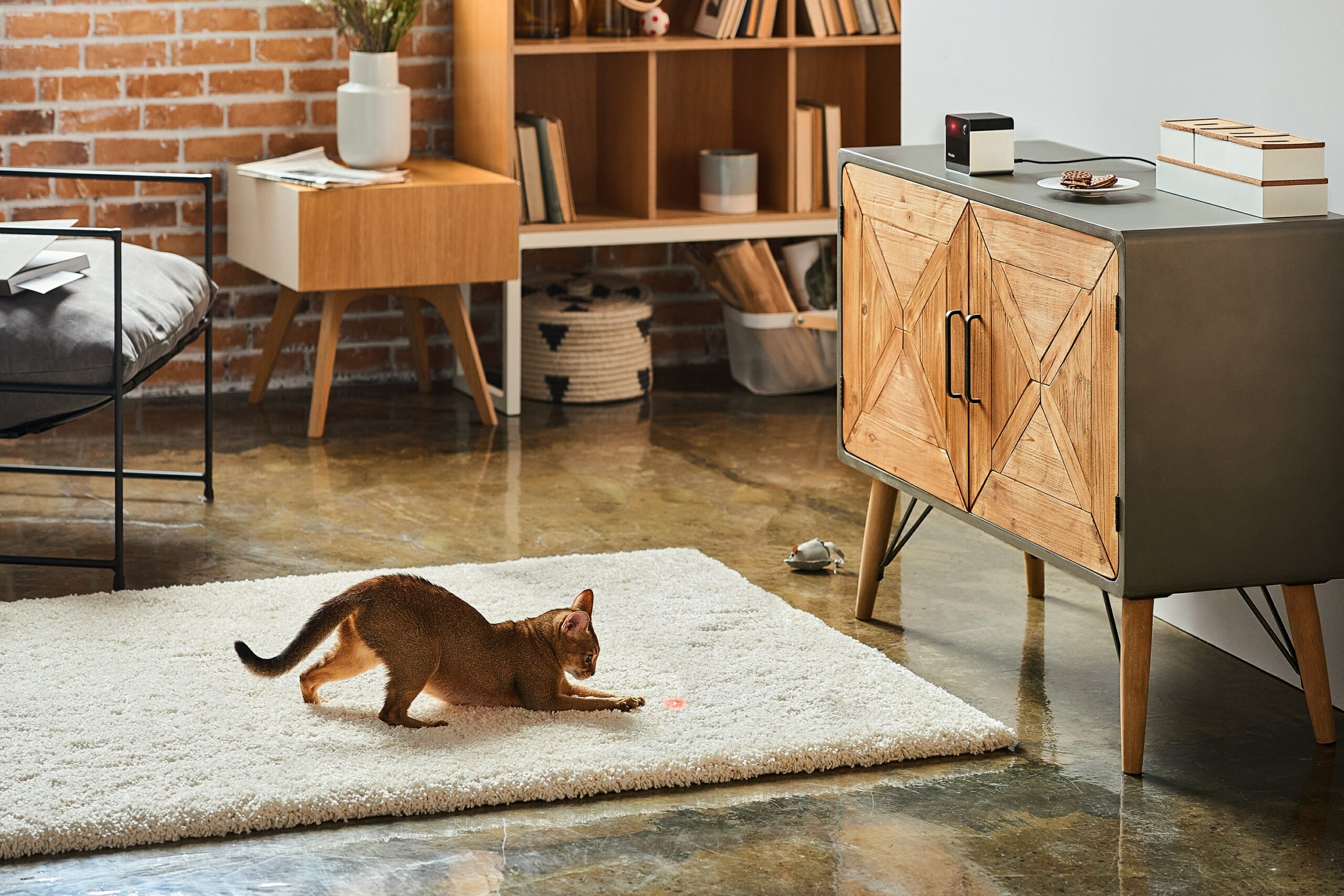Pet-parents can rest easy: thanks to AI, pet technology is being rewritten with smart wearable tools and services emerging–tailored to each pet’s needs–to understand and care for them better.
“These come in handy for raising alerts when something needs a pet parent’s attention.” – Andrey Klen
Dottie, a well-loved Boston Terrier, was losing weight. She looked healthy, had no prior medical conditions, ate regularly and was an active dog. Her caregivers were as confused as the vet who couldn’t figure out why Dottie was slowly diminishing in size. Boarding at an animal hospital, the vet decided to fit her with a smart collar. What they discovered was surprising–Dottie’s vital signs were great but at night, when all the staff went home, she was incredibly active, burning a lot of calories. Her activity score was 17.2, which is high when you consider that 11 is average for a healthy dog. Luckily, the fix was easy. Dottie simply needed more food to match her boundless energy yet without a smart collar, no one would have caught the problem.

Using smart devices, we’re constantly monitoring our own metrics but when it comes to our pets, it’s a little different. One of the main frustrations of veterinarians (and pet owners) is that when a medical condition is picked up, it’s often too late. “You come in for an annual check-up to get shots for your dog and in the exam, something comes up. It could be cancer that’s already spread or chronic kidney disease that’s already destroyed half of your dog’s kidney capacity… in other words, by the time we identify what is wrong with our pets, it’s already very advanced,” says Dr Asaf Dagan, the Co-Founder and Chief Veterinary Scientist at PetPace, a smart collar company with head offices in Burlington, Massachusetts in the United States. Pets cannot tell us how they feel. In fact, their natural survival instinct is to hide pain, discomfort and weakness. But for Dagan, this wasn’t enough. He wanted a way to monitor pets continuously, like they could in a hospital setting. “To identify things as early as possible–it will not only to prevent pain and suffering for the pet, it’s going to make a world of difference when trying to treat them,” adds Dagan. “You’ll have more options and a better chance of turning things around.”
Early detection
Loading...
Creating a wearable for dogs wasn’t straightforward. In a vet setting, fur is shaved off and a sensor is attached. “We had to develop everything from scratch,” says Dagan. Today, PetPace’s patented collar is lined with sensors that measure temperature, heart rate, respiratory rate and–like with Dottie–activity levels. “We also measure a very interesting feature called HRV (heart rate variability) which is a measurement of pain and stress,” he says. All of these metrics are taken every two to five minutes which means PetPace is collecting an extraordinary amount of data. There is so much data that they’re using artificial intelligence to collate the information, identifying disease patterns and predicting outcomes. “It’s not just about telling you that your dog has a pulse of 72 and two minutes ago, it was 74. That would be meaningless to the average user,” continues Dagan. The idea is to analyze the data in two ways. First, to compare it to your dog’s historical and baseline levels. “Over time, we use machine learning to create a biometric profile of your pet. We know the numbers in each metric so as soon as they deviate from this, we can raise a flag that something’s not right,” he explains. The second way PetPace is using this data is by comparing your dog’s data with those of other dogs of the same age, weight and breed. Dog breeds have varying physiological characteristics. A toy poodle, for example, will have a different heart rate to a German Shepherd. Brachycephalic breeds like pugs, French bulldogs and Boston Terriers are prone to eye, skin and breathing issues.
“To identify things as early as possible–it will not only to prevent pain and suffering for the pet, it’s going to make a world of difference when trying to treat them.” – Dr Asaf Dagan

Understanding pet behavior is something that Petcube, an American smart pet care company, has been looking into for nearly 14 years. “Back in 2012, pet tech was more of a novelty than a necessity,” says Andrey Klen, Petcube’s Co-Founder. “But things have changed. Pets aren’t just animals anymore; they are family. We want to understand pets better, care for them better, and yes, use smarter tools to do it.” What started as a way to peek in on your pet during work has grown into a holistic ecosystem of smart devices layered with intelligent algorithms. “And we use the data to power personalized tools and services tailored to each pet’s needs,” he adds. Once a simple nanny cam, Petcube now has AI-powered monitoring that is so advanced, it can pick on different behavior categories like running, chewing or crying. “These come in handy for raising alerts when something needs a pet parent’s attention,” says Klen. What’s really interesting is the data Petcube is collecting around demographics (or what Klen calls, ‘petrographics’). Looking at smart motion alerts, they’ve seen that 69% are triggered by dogs, 26% by cats, 1.8% by guinea pigs and 0.9% by rabbits. “Sure, this reflects our petrographics, distribution-wise, but it also shows that dogs tend to be more curious around the interactive cameras, especially when some of them toss treats.”
Rewriting vet tech
Like PetPace, Petcube too works with vets, offering services like telemedicine to access medical support when needed instead of resorting to answers on the internet. “They can start a vet chat, get a full video assessment and immediately know whether it’s an emergency or something that can be handled at home,” says Klen, who adds that quick, effective and reliable care is key when every second matters. For Klen, pet tech is a win-win because both pet parents and veterinarians can benefit from better data–data that previously impossible to obtain. PetPace, for example, is launching an epilepsy program because with their smart collar, they can identify seizures in dogs.
“It’s about getting a lot more data without having to bother the animal or your staff,” says Dagan. “And when a pet is home, you have objective, accurate data. After doing surgery and sending a pet home, instead of calling to ask how your dog is doing, I can see every moment of every day what is going on and I can set alerts if something is not right.”
But there’s another aspect of PetPace’s story that extends far beyond a smart collar and their next focus, felines–they’re actually rewriting medical textbooks. According to Dagan, the company now holds the largest biometric database in the world for pets. He tells the story of a meeting he attended with veterinary cardiologists where he shared that the pulse rate of a small dog is different from a medium and a large dog. “And they said, they had always suspected this but never had proof. They suspected it, but didn’t know it,” he continues. What these specialist vets were ultimately missing is long-term dog data, within a natural environment. They lacked the continuous, contextual insights that only come from tracking animals beyond the clinic walls. “And that’s our main effort now–to identify more and more disease patterns. There’s a lot to do, and it’s endless. We have enough work for the next 100 years!”
The nose knows
Worldwide, it is estimated that there are over 400 dog breeds. But what type of dog you have is not it’s only distinguishing factor. Dog nose prints (DNP) are often compared to fingerprints as they’re made up of lines and creases, creating a unique pattern. While microchips and collars with tags are the most common form of identification, there are a few startups looking into nose-print recognition using AI. At the University of New England, Australia, they’re already doing something similar with cattle and muzzles. One researcher tested his model on 300 cows and the AI managed to identify them with a 99.11% accuracy. In Cape Town, Raman Rajoo, has created an app called IntelliPaw that uses DNP. “Volunteering at rescues, I noticed that lost dogs made up a significant portion within animal welfare,” says Rajoo, who founded a company called CoBaTech named after his two dogs, Coda and Bailey. “I wanted a non-invasive, affordable and less traumatic way to help ID pets with snouts–an alternative to technology like chip tech.” Using AI and machine learning with animal biometrics, Rajoo’s goal is to help decrease how many pets end up in the system. “It will help reduce both pet and owner trauma,” he adds.
Loading...
